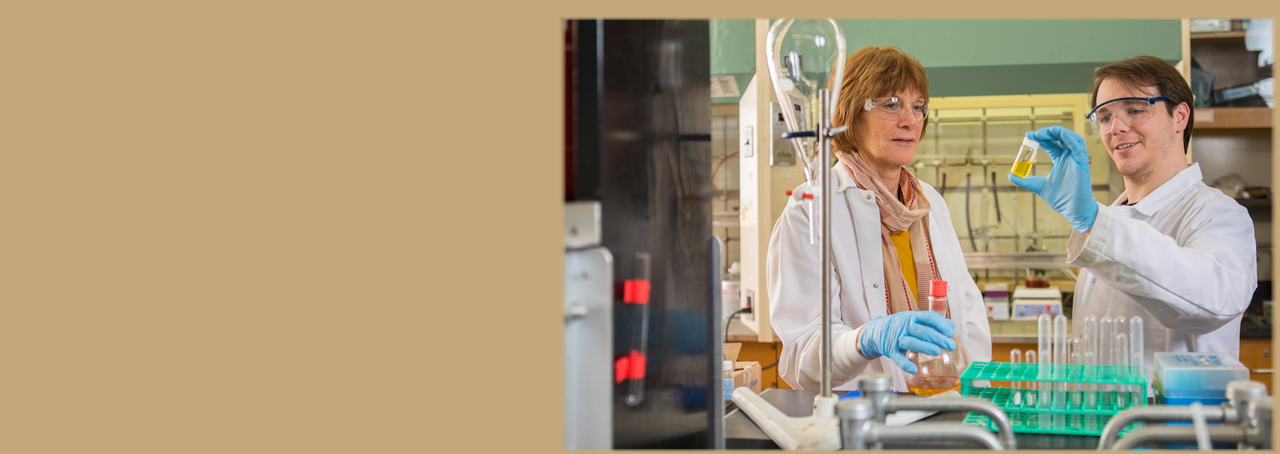Cutting edge contrast agent
Magnetic Resonance Imaging (MRI) has been with us since the 1970s. It is a non-invasive imaging process employing non-ionizing radiation to allow physicians to get diagnostic images of the body’s interior. The technology was pioneered by two SUNY researchers: Raymond Damadian (SUNY Downstate) and Paul Lauterbur (Stony Brook University).
MRI scans are so common now that nearly 40 million MRI scans are conducted each year in the US. In 16 million of these procedures, there is the need for a contrast agent that offers a sharper view of soft tissue. To date, nearly every FDA-approved contrast agent has contained gadolinium (Gd), a rare earth element that produces the enhanced image.
Until recently, Gd agents were considered safe, but there have been reports of acute reactions to certain compositions and applications of this element and lingering deposits in the brain tissue, bone and skin of patients who receive multiple doses. Studies are in their early stages and the debate is ongoing, but there is a growing interest in an alternative.
Janet Morrow, Distinguished Professor of Chemistry at the University at Buffalo (UB), has developed an alternative: replacing Gd contrast agents with iron (Fe)-based contrast agents that deliver comparable or even clearer images without the same toxicity risk. Fe agents, administered correctly, are stable and clear the body rapidly through the kidneys. As she explains, “Iron is natural: It’s already in the blood.”
The SUNY Technology Accelerator Fund (TAF) recently awarded Dr. Morrow an investment for her iron-based contrast agent technology. TAF exists to help SUNY faculty inventors and scientists through the process of transforming their research into market-ready technologies. In Morrow’s case, the TAF investment will help fund her lab, and enable her to hire graduate assistants and to purchase supplies and MRI time.
If Morrow’s Gd replacement concept becomes accepted, there will be immediate benefits for patients whose imaging options are severely limited, such as subjects with Chronic Kidney Disease (CKD) and the nearly half a million multiple sclerosis patients in the U.S. Also, concerns about Gd exposure have caused many doctors and radiologists to use contrast agents even more cautiously than the American College of Radiology guidelines.
Morrow cautions that there is a lot of investigation, experimentation and paperwork to be completed. The complexes must be modified. The most effective administrative methods must be developed. Ferric Contrast, a start-up company with a focus on iron-based contrast agents, licensed patent applications covering the first-generation Fe-based contrast agents and is working toward filing an Investigational New Drug application, and animal trials are underway. UB assisted the company in securing a National Science Foundation (NSF) Small Business Technology Transfer (STTR) award. This TAF award is directed to developing second generation compounds.
“For commercialization the best bet is to develop something everybody can use: the substitute for gadolinium,” she says. “So you’re looking for certain kinds of properties that can do that because you want to capture as much of the market as you can.”
UB’s Technology Transfer team helped guide Morrow’s idea through the patent application process. Morrow sees multiple patent possibilities around these iron-based agents.
“We’ve got three PCT applications and one provisional patent filed,” says Morrow. “But this is so new that it’s going to be really challenging to cover all the patent possibilities.”
Another way the iron-based agent is a solid alternative is that gadolinium--a rare earth element--is primarily mined in and obtained from China. The current trade war could send ripples through the market, or even cause a shortage. Iron is abundant, widely distributed and affordable.
Dr. Morrow is well-traveled. She completed her B.S. in chemistry at the University of California, Santa Barbara, her Ph.D. in chemistry at the University of North Carolina, Chapel Hill, and then received a National Science Foundation Award to work as a postdoctoral fellow at the University of Bordeaux. She then returned to the states, to work as a postdoctoral fellow at the University of California, San Diego. Shortly after, she joined the faculty at UB as a professor.
Morrow’s research has received awards such as the Special Award for Creativity from the National Science Foundation. Her teaching interests include bioinorganic and inorganic chemistry, biochemistry and general chemistry. She was also the director of the Research Experiences for Undergraduates (REU) in the UB chemistry department for nine years.
Some of her original motivation to go into science was sparked by her father who encouraged her to study science or engineering. He noted her early interest in marine biology and recommended that she pursue a STEM field in her studies at the University of California, Santa Barbara.
Morrow's leadership abilities, her analytical powers and her ability to solve problems in creative ways are prime examples of what makes the SUNY system the ideal community for innovation. Her iron-based contrast agent technology is a solid step forward in the development of magnetic resonance imaging. In the final analysis, the true aim of advanced research should be to address social problems, to answer the needs of humanity.
comments powered by Disqus


